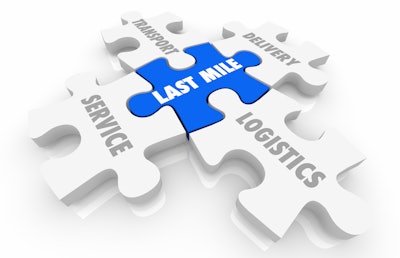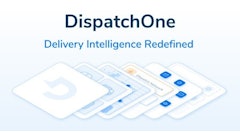
It’s no surprise that the industry has changed since my days delivering for Hungry Howies in the 90s, but the delivery driver profession has experienced a seismic shift over the past few years. The world changed in 2020, and with a large segment of the food delivery industry impacted by the lasting effects of covid, demand has skyrocketed. Companies providing last-mile delivery are looking for more cost-effective options to improve customer satisfaction while a new wave of demand has over 40% of retail leaders striving to create same-day delivery solutions. We now find ourselves exploring new food delivery options and needing to restructure our focus to remain competitive in this new arena.
The exponential growth in demand for delivery drivers has moved the market from an operator-centric to a driver-centric market. In other words, operators previously had significant control over the market’s supply and demand, faced limited competition, and could set standards and conditions with full compliance due to limited alternative options. In today’s increasingly competitive and complex market, drivers have more flexibility and choice. They’re able to select the platforms, structures and gigs that suit their preferences and maximize personal profitability, requiring operators to compete for driver services and loyalty.
For many drivers “choice” means leaning into the gig economy, and unsurprisingly so. Imagine working as a delivery driver at a local restaurant. In between delivery orders, you’re busy sweeping the floors, cleaning the bathrooms, helping to prep food, watching the clock and hoping that the manager approves your request for time off the following week. Meanwhile, you watch a third-party “gig” driver come in for a pickup, chatting on the phone about what time they’re going to decide to be done for the day while they grab the already prepared and packaged food. Then they walk right back out taking with them your chance at earning tips.
Driving for open-source platforms offers freedom, a work-life balance and money-making potential, but it comes at a cost. Gig fleets completely lack alignment with the operator's customer experience and business goals. The entire experience for all parties involved is being managed by technology without uniformity or tools for improvement, resulting in inconsistent service quality and dissatisfaction for both consumers and drivers.
In turn, these shifts have created a rift between the needs and objectives of the operators vs. the needs of the drivers.
Despite this, the demand for delivery services shows no signs of slowing down any time soon. One survey found that 83% of people expect home delivery to become their primary method of consumption, aligning with overarching trends toward digitization. For better or for worse, humankind has grown accustomed to interfacing via the web. We’ve been conditioned to conduct almost everything through a phone. As a result of this digital age and reliance on home delivery, drivers are becoming the face of companies.
They’re often the only human touchpoint between brand and consumer. As such, they’ve proven to have a significant impact on brand perception and loyalty, even as third-party gig drivers. Adversely, as the face of the company (company employee or not), drivers also tend to pay the consequences regardless of fault when orders are wrong. Good or bad, there’s an interdependent relationship between the performance of drivers and operators on one another’s success. This paradigm presents an opportunity for both parties to benefit from a more collaborative and rewarding relationship.
Attracted to the industry by the growing job market, driver profiles are more diverse and experienced than ever before with the average age of a delivery driver in the U.S. being 47 years old. Not to mention being ranked as one of the most dangerous jobs in our country by the Bureau of Labor Statistics, drivers today are bringing more value to the table. Businesses that recognize that through adequate accolades, compensation, and relationship-building are experiencing a high volume of high-quality, effective, and efficient drivers. Why? Because when employees thrive, so does the bottom line. We already know this, but we’ve yet to extend the same level of appreciation and support to our contracted workers. We also know that those with the best drivers “win”, and yet we’re failing to place drivers at the center of our business ecosystem.
As an industry, we need to give drivers a community to share ideas and experiences that can improve the business and help them feel more ownership of the experience. This should be enforced by opportunities for consistent feedback and acknowledgment.
Employers should consider incentives for vehicle maintenance and service quality, which requires increased visibility through real-time behavior tracking data, post-delivery feedback and coaching. The trick is implementing such in a way that simplifies the driver’s hybrid experience (allowing stability between crowdsourced, contracted and associate driving positions).
Leaning into the gig economy we find ourselves in requires structural and operational changes for effective communication with all stakeholders involved. Creating universally recognized performance metrics that drivers have ownership over and can take with them throughout any job enhances reliability, consistency, job satisfaction, consumer satisfaction and hiring manager satisfaction. It also gives the ability to adequately reward quality driver behavior and address undesirable behavior through actionable insights.
As the world continues to depend more heavily on delivery services, it’s crucial to recognize and prioritize the essential role that drivers play in shaping the future of e-commerce and modern-day consumerism. Once we build strategies to more accurately reflect drivers’ roles today, the sky’s the limit. The future of last-mile delivery will evolve to provide access to performance metrics and scores, digital communities, and view drivers as a well-paid, qualified, trusted and well-respected profession, and early adopters will be the most likely to see success.
The delivery driver profession is evolving, but it is also becoming more exciting, engaging and rewarding. Are you ready to join the revolution?

![Pros To Know 2026 [color]](https://img.sdcexec.com/mindful/acbm/workspaces/default/uploads/2025/08/prostoknow-2026-color.mduFvhpgMk.png?auto=format%2Ccompress&bg=fff&fill-color=fff&fit=fill&h=100&q=70&w=100)








![Pros To Know 2026 [color]](https://img.sdcexec.com/mindful/acbm/workspaces/default/uploads/2025/08/prostoknow-2026-color.mduFvhpgMk.png?ar=16%3A9&auto=format%2Ccompress&bg=fff&fill-color=fff&fit=fill&h=135&q=70&w=240)








